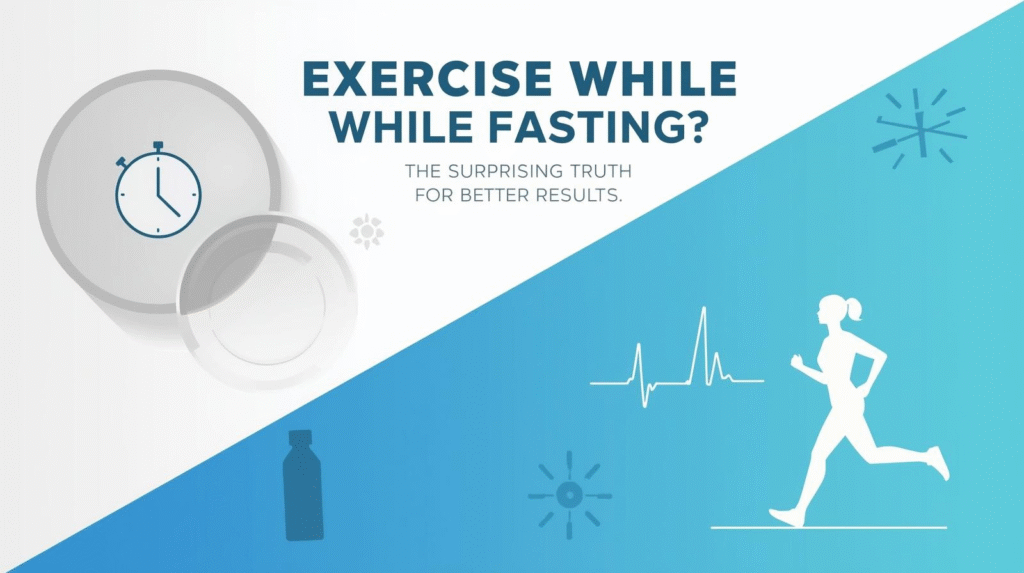The idea of working out on an empty stomach sounds miserable. But what if it’s the secret to unlocking a new level of fat loss? Let’s break down the science, the benefits, and exactly how to do it safely without hitting a wall.

You’re committed to your fasting schedule, but your workout time is approaching. Should you eat something first? Push through the fast? The answer isn’t a simple yes or no. Timing your exercise with your fasting window can be a powerful strategy, but it requires a little know-how.
The Benefits of Fasted Exercise: The Fat-Burning Boost
When you exercise in a fasted state (meaning you haven’t eaten for several hours, like first thing in the morning), your body is already primed to burn fat. Your insulin levels are low, and your stored glycogen is depleted, signaling your system to tap directly into your fat reserves for fuel.
Studies suggest that fasted cardio can increase fat oxidation, meaning you may burn a higher percentage of fat during that workout. It’s like adding a turbocharger to your body’s natural fat-burning engine.
The Potential Downsides: Intensity and Muscle
However, there’s a catch. High-intensity workouts—like heavy weightlifting, sprint intervals (HIIT), or a tough CrossFit session—require quick, explosive energy. That energy primarily comes from glycogen (stored carbs), which is low during a fast.
Trying to lift heavy or sprint all-out while fasted can lead to:
- Feeling lightheaded, dizzy, or nauseous.
- Not being able to perform at your usual intensity.
- In very extreme cases, potentially using muscle protein for energy, which is counterproductive.
So, What Should You Do? Your Exercise-Fasting Guide
The best approach depends entirely on your goals and the type of exercise you’re doing.
- For Steady-State Cardio (The Fat-Burning Zone):
- Examples: Brisk walking, jogging, cycling at a steady pace, swimming laps.
- The Verdict: YES, it’s ideal. This low-to-moderate intensity is perfect for a fasted state. Your body can comfortably use fat for fuel. A morning walk or light jog before breaking your fast is a fantastic habit.
- For High-Intensity Training (The Performance Zone):
- Examples: Heavy strength training, HIIT, sprinting, sports competitions.
- The Verdict: PROCEED WITH CAUTION. It’s generally better to schedule these sessions during your eating window. The best strategy is to eat a meal containing carbs and protein about 1-2 hours before your workout. This gives you the energy to crush your session and lift heavier, which builds more muscle over time.
- The Hybrid Approach (The Best of Both Worlds):
- Many experts recommend a hybrid approach. Do your steady-state fasted cardio in the morning, and then schedule your high-intensity or strength training sessions for the afternoon, within your eating window, after you’ve had one or two meals.
Listening to Your Body is Key
There’s no one-size-fits-all rule. Some people thrive on fasted weight training, while others feel weak. The most important thing is to experiment and see how you feel.
- If you feel great: energized and strong during fasted workouts, keep going!
- If you feel terrible: dizzy, weak, or unable to perform, it’s a sign to fuel up first.
Always, always hydrate well with water and electrolytes before, during, and after any fasted workout.
Need a Fasted Workout Plan?
If you’re excited to try fasted cardio but want a structured plan that aligns with your fasting schedule, check out the “Fasted Fitness Revolution” Program. It includes guided workout videos for all levels, specifically designed to be done on an empty stomach.